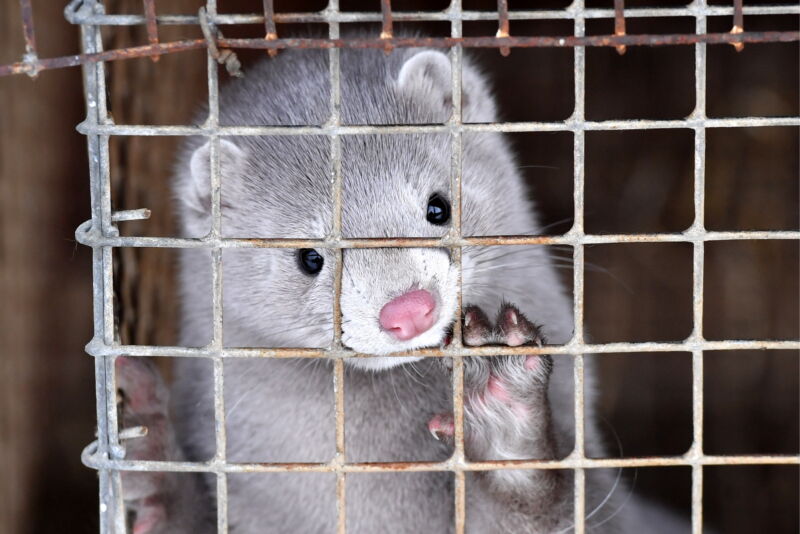COVID Cull —
Transmission risks to humans are unclear.
Beth Mole
–



Enlarge / Coronavirus has swept through mink farms in Europe.
The pandemic coronavirus has made its way onto two mink farms in Utah, leading to “unusually large numbers” of dead animals, according to a Tuesday announcement by the US Department of Agriculture.
These are the first reported cases of the coronavirus, SARS-CoV-2, infecting mink in the country. For months, authorities in European countries, including the Netherlands, Denmark, and Spain, have reported outbreaks in mink pelt farms, leading to the culling of more than a million of the soft, furry mammals. From laboratory experiments, it’s also clear that ferrets, a relative of minks, are also readily infected with the novel coronavirus.
The affected farms in Utah reported cases of COVID-19 in people working on the farms, who may have spread the infection to the animals.
There are concerns that some mink may have asymptomatic infections and could act as a reservoir, continuing to spread the virus to other mink and, potentially, to humans. Authorities in the Netherlands have reported that farm workers may have contracted the virus from infected mink. However, the evidence is not definitive and, even if the virus can jump from mink to humans, it’s unclear how easily that happens.
“There is currently no evidence that animals, including mink, play a significant role in spreading the virus to humans,” the USDA said in its announcement. “Based on the limited information available to date, the risk of animals spreading SARS-CoV-2 to people is considered to be low.”
Dean Taylor, Utah’s state veterinarian, told The Washington Post that, for now, the affected mink farms have no plans to cull their animals.
“We don’t feel like we have enough information to make that decision at this point,” Taylor said. “Most of these farms have already got good biosecurity. I don’t think they need to worry unduly, but all of us need to take it seriously.”
The infections were first noticed earlier this month after large numbers of animals on the farms began dying. Initial inspections suggested they had died of severe pneumonia that resembled the cases seen in Europe, Tom Baldwin, a veterinary pathologist at Utah State University, Logan, told Science. The magazine noted that there are 245 mink farms in 22 states, according to Fur Commission USA, the country’s largest association of mink farmers. More than a dozen of those farms are in Utah.

